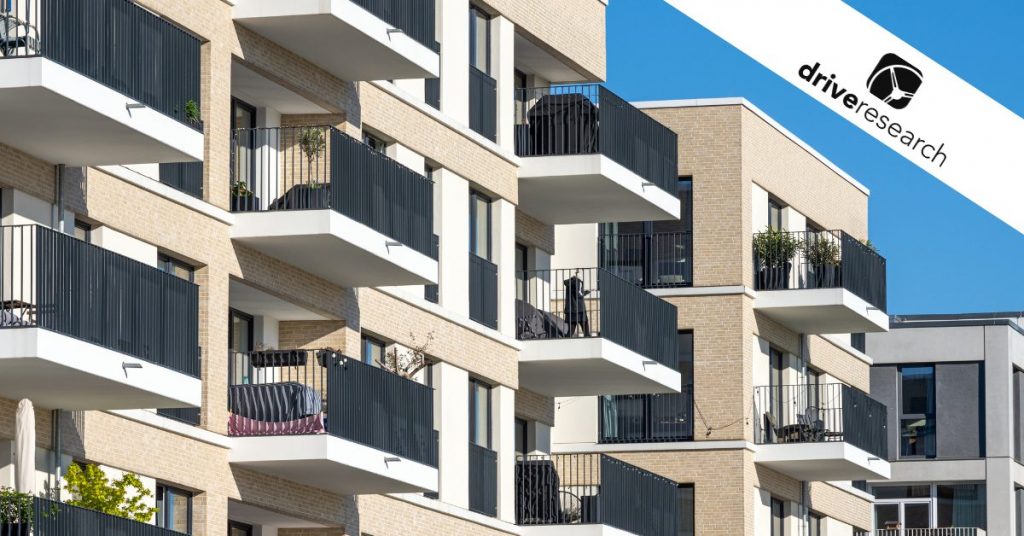
Wondering how developers find out whether there is enough demand to create a new apartment building?
Like many business objectives, there’s a market research study for that.
A market research feasibility study gives insight into competitors, ideal amenities, target market criteria, and pricing.
By conducting these studies, companies can glean important information to boost the likelihood of a successful new business venture.
Learn more about the objectives, approach, and components of these projects by reading the apartment complex feasibility study example below.
Objectives and Approach
Recently, a developer partnered with Drive Research to conduct a feasibility study project located in Denver, CO.
The feasibility research study offered guidance for the concept strategy, provided relevant data to assist with the decision, minimized risk, and maximized return on investment (ROI).
To address the objectives at hand, Drive Research recommended a 3-component market research feasibility study.
The approach combined qualitative and quantitative research to provide the client with a comprehensive overview of the concept.
The recommended components included:
- Market analysis and demographic trends of the market area
- Competitive analysis of up to 30 like-properties in the region
- Online survey to 200 respondents in the Denver DMA
The Key Takeaway: Feasibility studies collect vital feedback from the target audience to drive branding, amenities, and planning. For this specific project, our company used both qualitative and quantitative research.
Component #1: Market Analysis & Demographic Trends
The first component of the market research feasibility study utilized the U.S. Census Bureau demographic information and our Alteryx Analytics software.
By using these, we could understand population trends and demographic shifts in the market, thus impacting the concept.
A primary market area (PMA), based on a 12-minute drive time from the property site, was created for analysis to understand the populations the units will draw from.
What is a market analysis, you ask?
Market research analysis offers insights for:
- Audience demographics
- Buyer profiles
- Buying habits
Research has shown that two-thirds of brands see their competition through the lens of customer experience. Therefore, by truly understanding your target audience, you can create specific goals to maximize interest in renting.
To determine the correct market area, Drive Research reviewed housing feasibility statistics and used best-practice metrics from past studies.
Demographic data includes:
- Populations
- Households
- Genders
- Ages
- Household incomes
- Children in the home
- Ages of children
- Several other secondary statistics.
In addition to the Census data, Drive Research used online desk research to explore the nature and some of the causes of Denver’s recent population boom.
The Key Takeaway: The in-depth demographic information collected in the first component of a feasibility study determines the available supply of the audience and understands the changing demographics of targeted market areas.
Download a Free Example Market Analysis Report
Component #2: Competitive Analysis
Next up, our feasibility studies company conducts competitor research.
The competitive analysis for this project feasibility study provided a comprehensive overview of comparable and similar apartments in the market area.
Five competitive apartment complexes in the PMA were analyzed through in-depth profiles with deeper analysis and pictures.
These competitor profiles included:
- Maps and photos of the properties
- Online rating scores
- Other noteworthy features
- An overview of amenities
In addition to the 5 in-depth profiles, a full inventory of competitive properties was created for our market research feasibility study.
For the extended list of 30 properties, Drive Research inventoried the number of units, number of bedrooms, square footage of living space, rental rates per month, and occupancy rates. Additionally, monthly rent ranges and averages were calculated.
Lastly, information was collected on amenities, features, and other benefits offered to residents and tenants. Square footage and monthly rents were used for a cost analysis.
Data for the feasibility research study was collected through various methods, including online research, telephone research, mystery shopping calls, and emails where Drive Research staff will inquire for information.
The Key Takeaway: The competitive analysis answers key questions like 1): what are the occupancy rate at competitor locations and 2): how do our plans compare to the competition? The feedback for these questions offers tremendous help in shaping a market feasibility study for a new product or service.
Recommended Reading: Ultimate Guide to Conducting a Competitor Analysis
Component #3: Online Survey
The last component of an apartment feasibility study is an online survey with residents of the community most likely to rent.
The survey was completed through targeted panel email lists to reach participants in the target demographic and market area.
The target audience included those aged 25 or older and current renters or homeowners who would consider renting in the future.
The online survey helped with:
- Identifying profiles of likely users (differentiators, workstyle, lifestyle, etc.)
- Factors in choice
- Must-have amenities
- Geographic draws for the property
- Other secondary objectives
The survey took an average of 8 minutes to complete, included 41 questions, and received 200 responses. Fieldwork for the survey began on November 11 and lasted until November 22, 2021.
With a probabilistic sample, a total of 200 responses at the 95% confidence level offers a +6.9% margin of error.
If the survey were conducted with another random pool of 200 respondents, the results would yield within +6.9% or -6.9% of the stated totals in the reports.
The Key Takeaway: The final piece of the market research feasibility study examined interest, appeal, and desired amenities. Our online survey was customized to the needs of the developer to yield the best results.
Conduct a Feasibility Study with Drive Research
If you’d like to conduct a feasibility research study, Drive Research is ready to help you get started. Our team possesses the expert knowledge and tools to create the best possible project for your exact needs.
Interested in learning more about our market research services? Get in touch with us today.



